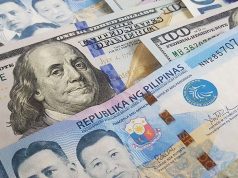Balance of payments swings to $2.7B deficit in September
By Melissa Luz T. Lopez, Senior Reporter
DOLLAR outflows ballooned in September to post its widest level in nearly five years, the Bangko Sentral ng Pilipinas (BSP) said, on the back of foreign loan payments and at a time of a weaker peso.
The Philippines’ balance of payments (BoP) position swung to a $2.696 billion deficit last month, reversing the $1.272 billion surplus in August and the narrow $24 million surfeit in September 2017.
The BoP measures the country’s transactions with the rest of the world at a given time. A deficit means more funds fled the economy than what went in, while a surplus shows that more money entered the Philippines.
The September tally is the widest gap since a $4.48-billion deficit in January 2014, when foreign funds fled emerging markets during the “taper tantrum” as the United States Federal Reserve decided to trim its bond-buying program starting that year.
In a statement, the BSP attributed the continued outflows to payments made by the national government for maturing foreign debt, as well as the BSP’s regular foreign exchange operations.
The central bank uses its dollar reserves to temper sharp swings in the peso-dollar rate, as part of its “tactical intervention” to keep the currency competitive. The local unit traded at fresh 12-year lows in September at the P54 level against the greenback to average P53.9419, weaker than P51.0094 in the same month last year.
Outflows were partly offset by higher net foreign currency deposits held by the state, the BSP added.
The September print brought the nine-month BoP tally to a $5.136 billion deficit, more than triple the $1.367-billion gap in the same period in 2017.
This is substantially wider than the $1.5 billion deficit expected for the full year since the BSP’s review back in May.
“The higher deficit may be attributed partly to the widening merchandise trade deficit for the first eight months of the year. This, in turn, was brought about mainly by the sustained rise in imports of raw materials and intermediate goods as well as capital goods to support domestic economic expansion,” the central bank said.
Imports grew by 15% while exports slipped by 2% as of end-August, leaving the trade gap at $26.003 billion for the first eight months, according to preliminary data from the Philippine Statistics Authority.
Michael L. Ricafort, economist at the Rizal Commercial Banking Corp., said surging global oil prices as well as net foreign selling in the local financial markets also contributed to the wider trade gap.
“For 4Q 2018, BOP deficits could still continue especially if trade deficits are sustained in view of increased oil import bill of the country especially if there is any volatility in global crude oil prices (among four-year highs recently), as well as continued imports of electronics (for further processing/re-exports), steel/metals/other construction materials, vehicles,” Mr. Ricafort said via e-mail.
While the BoP tally could lead to a weaker peso-dollar rate, the economist noted that a “seasonal increase” in remittance inflows particularly for Christmas-related spending could lend some support.



